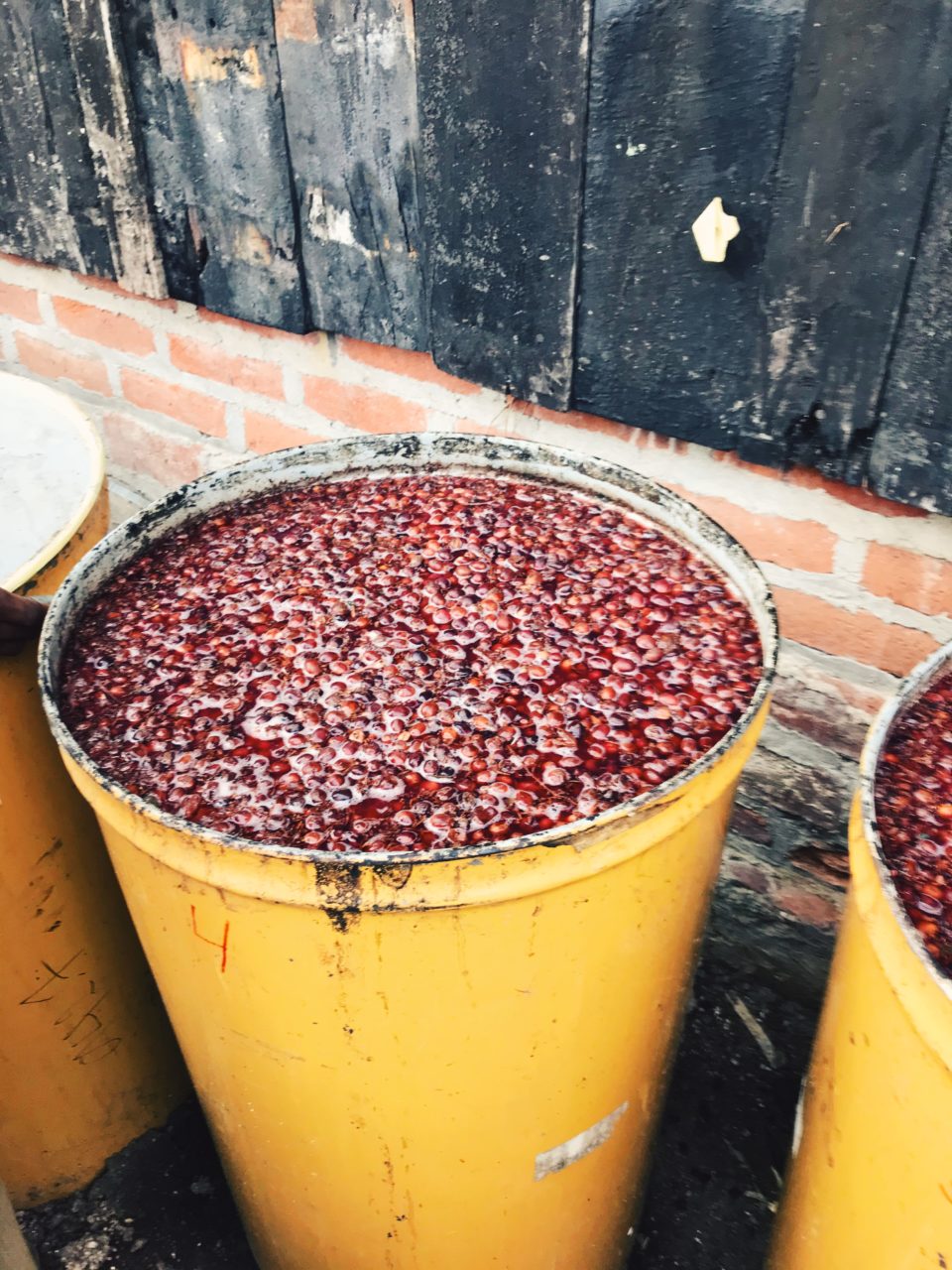Specialty coffee is always evolving. Traditionally, coffee cherries have been processed using three methods: washed, natural (or dry), and honey processing. In recent years, however, innovative producers have started experimenting with new, unconventional and alternative processing techniques such as anaerobic fermentation. But what is anaerobic fermentation in coffee processing all about?
How is fermentation used in coffee processing?
From the point that the coffee cherry is picked from the coffee tree, a chemical change begins inside. This change is present in all coffee processing methods, it’s simple bio-chemistry. Sugars in a fruit with air present bacteria begin a what we call fermentation. Mastering fermentation is crucial since after harvesting coffee we still need to get to the seed either by discarding or using coffee cherry’s fruit flesh and skin during the processing.
There is a chemical interaction between the naturally occurring yeasts and the sugars of the beans which has an impact on the final flavor and quality of the bean. Miriam-Webster dictionary defines fermentation as “the enzyme-catalyzed anaerobic breakdown of an energy-rich compound (such as a carbohydrate to carbon dioxide and alcohol or to an organic acid) by the action of microorganisms (such as bacteria or yeast) that occurs naturally”. That might sound a bit confusing, so let’s break it down in simpler terms of coffee.

When coffee lands back at the processing area after being carefully hand picked up on the mountains, there is one of two things that primarily happen. Either the fruit is removed from the coffee beans, or left on. If the coffee lot undergoes natural (dry) processing, the cherries are spread out on raised beds or on patios to begin the drying process. If different processing method is chosen (e.g. honey or washed), the coffee cherries are placed in large open tanks with water. Although it may seem like the fruit is just sitting in these tanks, there is a chemical reaction happening within. This chemical reaction or fermentation is the interaction of the yeast on the fruit with oxygen and the glucose (or sugar) inside.
The reason to leave the coffee cherries in tanks is because as natural bacteria interacts with the fruit, it becomes easier to separate all fruit layers like pulp and flesh from the seed.
These tanks must be carefully monitored to determine the number of sugars left in the coffee as it is a delicate process and takes a lot of experience to do correctly. This process can completely change the quality and flavor of the final product. Once the coffee reaches certain levels determined by the producer such as PH and sugar content, only then will it move to the next processing phase and ultimately travel to drying beds which slows the fermentation and allows the beans to dry into the “green beans” we roast here at Firebat.
What is Anaerobic Fermentation?
If all coffee is fermented, what is so special or different about anaerobic fermentation? Anaerobic fermentation occurs when oxygen is removed from the equation. This process rapidly changes the coffee fruit, resulting in a flavor much different than traditional fermentation methods. This is done by sealing the intact coffee cherries or the de-pulped cherries in containers with water for certain amount of hours before they are dried. This can be done many ways, but the easiest way to understand it is with the use of a barrel.

The coffee is sealed inside of a barrel and filled with water, with a one-way (exit) valve on the top. As the naturally incurring yeast interacts with the sugars of the coffee fruit, carbon dioxide begins to be released and creates pressure. This pressure pushes any remaining air out of the valve on the top. When oxygen is removed, yeast is forced to consume the sugars in the fruits in order to produce energy. This chemical reaction releases enzymes and can completely change the chemical composition and ultimately the flavor of the coffee. This new method of fermentation is so experimental that it requires a trial-and-error approach before mastering the process to figure out what amount of time is needed to achieve the most desirable result.
The anaerobic process requires a high level of control of key variables such as: temperature, sugars, pH and time, all which can affect the final result. We have heard from our producers a wide range of fermenting times, from hours to several days. After the beans or cherries have achieved the producers parameters for the fermentation process they must move to the last stages of processing. Through all this journey coffee seeds are protected by inner layers called parchment and silver-skin, that keeps the seed integrity after discarding the fermented dried fruit layers.

The conversion process that happens inside of the barrels is a miraculous mixture of nature’s magic and science. This process deepens and enhances the flavors of coffee. If nothing else, these techniques give us one more tools to modify and improve the quality of a product that has been taken care of at every step of its life. As we understand more about the processes which affect the final flavor, we can strive to perfect the best expression of the fruit we all know as coffee. We hope that you join us on our journey of tasting and understanding anaerobic coffees.
Try our limited release of anaerobically fermented pacamara natural from 2020 CoE winning farm, La Divina.
Learn More About Coffee Processing!
Learn more about the different coffee processing methods here!
